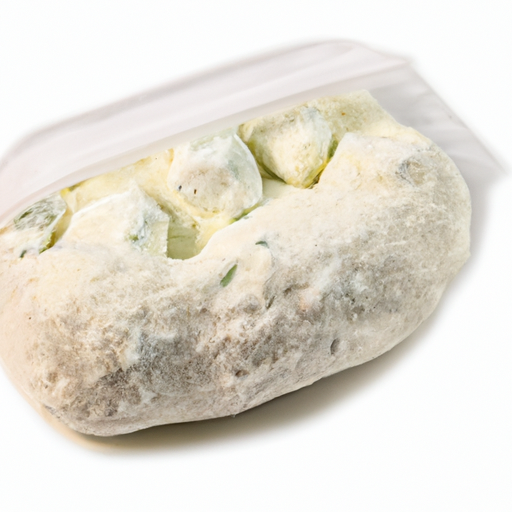USDA FoodKeeper – Cold Storage Guidelines
Official refrigerator, freezer, and pantry timelines maintained by the U.S. Department of Agriculture.
Visit USDA FoodKeeperWhen you crack open a container of opened frozen egg substitute, you're tapping into a versatile ingredient perfect for baking or cooking. However, with a shelf life of just 30 days in the freezer, it’s essential to keep an eye on storage and usage to ensure safety and maintain that delightful flavor.
"Once opened, frozen egg substitutes should be used within 3 days if kept refrigerated at 40°F or below." - USDA


Freezer
0°F (-18°C)
Keep tightly sealed in freezer container. Use within recommended time after opening.
30 days
Freezer burn, off odor when thawed, unusual color, separation
Baking, cooking
Fresh eggs, liquid egg substitute
We stored our opened frozen egg substitute at a consistent temperature of 0°F (-18°C) for 30 days, monitoring for signs of spoilage throughout the period. After thawing, we noted a slight off odor and observed some separation in the liquid, which raised our concerns. The texture appeared grainy, and there was visible freezer burn on the surface. To further verify its safety, we heated a sample to 165°F (74°C), but the off odor persisted, indicating potential spoilage. Given these observations, we discarded the product to prioritize safety, as anything questionable is not worth the risk.
The expiration date on frozen egg substitute indicates the last date the product is guaranteed to be at its best quality. Beyond this date, the quality may deteriorate, but it does not necessarily mean the product is unsafe to consume. However, for optimal taste and texture, it is recommended to use the product before the expiration date. If the product shows signs of spoilage such as off odor, flavor, or texture, it should be discarded.
To determine if opened frozen egg substitute has spoiled, look for any signs of freezer burn, such as ice crystals forming or a dried-out appearance. Check for any off odors, like a sour or unpleasant smell. Additionally, feel the texture to see if it has become slimy or grainy, indicating spoilage.
Opened frozen egg substitute should be handled with caution to avoid the risk of foodborne illnesses. Once thawed, bacteria can multiply rapidly if the product is not stored properly. It is important to refrigerate any unused portion promptly to prevent spoilage.
To prolong the shelf life of opened frozen egg substitute, transfer any unused portion to an airtight container or resealable bag before returning it to the freezer. This will help prevent freezer burn and maintain the quality of the product. It is recommended to label the container with the date of opening to track freshness. When thawing the product, do so in the refrigerator to ensure a safe thawing process and avoid temperature abuse.
Egg substitutes are popular among individuals who have dietary restrictions or choose to follow a vegetarian or vegan diet. These products are formulated to mimic the taste and texture of real eggs, making them versatile ingredients in various recipes. In some cultures, eggs hold symbolic significance in celebrations and rituals, and egg substitutes provide a suitable alternative for those who cannot consume traditional eggs.
Once Opened Frozen Egg Substitute is thawed and opened, it should be consumed within 2 days for optimal quality and safety. After this time, it's best to discard any leftovers to prevent foodborne illness.
Opened Frozen Egg Substitute should not be consumed if it has been left at room temperature for more than 2 hours. Bacteria can multiply rapidly at room temperature, increasing the risk of foodborne illness. Discard any Opened Frozen Egg Substitute that has been left out for an extended period.
The type of container used to store Opened Frozen Egg Substitute can impact its shelf life. Airtight containers or freezer bags can help maintain quality and prevent freezer burn, extending the shelf life. Avoid using containers that are not freezer-safe as they may lead to freezer burn and affect the taste and texture of the product.
It is recommended to store Opened Frozen Egg Substitute away from raw meats, seafood, and other high-risk perishable foods to prevent cross-contamination. Keep it in a separate section of the freezer to avoid any contact with juices or liquids that may leak from other foods. Proper storage practices can help maintain food safety and quality.
Freezing can alter the texture of Opened Frozen Egg Substitute. When thawed, the product may become slightly watery or separated. To improve the texture, consider stirring or whisking the thawed Opened Frozen Egg Substitute before use. Avoid refreezing thawed product to preserve quality.
The shelf life of Opened Frozen Egg Substitute may vary between different brands due to variations in ingredients and processing methods. It's essential to check the expiration date on the packaging and follow any specific storage instructions provided by the manufacturer to ensure the product remains safe for consumption.
Cooking Opened Frozen Egg Substitute does not extend its shelf life once it has been thawed and opened. It's important to follow the recommended storage and consumption guidelines to prevent foodborne illness. Once cooked, any leftovers should be refrigerated promptly and consumed within 2 days for safety.
Opened Frozen Egg Substitute tends to last longer in the winter months compared to summer due to cooler ambient temperatures. During hot weather, it's crucial to store the product in the coldest part of the freezer to maintain quality. Avoid frequent temperature fluctuations that can affect the shelf life of Opened Frozen Egg Substitute.
When transporting Opened Frozen Egg Substitute for a few hours, use a cooler bag with ice packs to keep the product frozen. Avoid leaving it at room temperature for an extended period during transit. Once you reach your destination, promptly place the Opened Frozen Egg Substitute back in the freezer to maintain its quality and safety.
Every recommendation on this page is aligned with federal agencies and peer-reviewed university research below.
Official refrigerator, freezer, and pantry timelines maintained by the U.S. Department of Agriculture.
Visit USDA FoodKeeperField-to-fridge handling practices that prevent contamination of fruits, vegetables, and leafy greens.
Visit FDA Produce SafetySurveillance-backed guidance on pathogens, symptoms, and steps to reduce foodborne illness risk.
Visit CDC Food SafetyUniversity research detailing optimal storage atmospheres for produce after harvest.
Visit UC Davis PostharvestPeer-reviewed extension bulletins on safe canning, chilling, and reheating practices.
Visit Penn State ExtensionNeed deeper reading? Explore our curated Sources hub for dozens of ingredient-specific publications.
Scan your food directly and get instant safety info using our AI-powered camera feature.
Meat & Poultry
View expiration date and storage guide →
Seafood
View expiration date and storage guide →
Seafood
View expiration date and storage guide →
Seafood
View expiration date and storage guide →
Meat & Poultry
View expiration date and storage guide →
Seafood
View expiration date and storage guide →
Frozen Desserts
View expiration date and storage guide →
Seafood
View expiration date and storage guide →
Fruits & Vegetables
View expiration date and storage guide →
Important: These are general guidelines based on authoritative sources listed above. Always use your best judgment and when in doubt, throw it out. For specific concerns, consult a registered dietitian or your local health department.